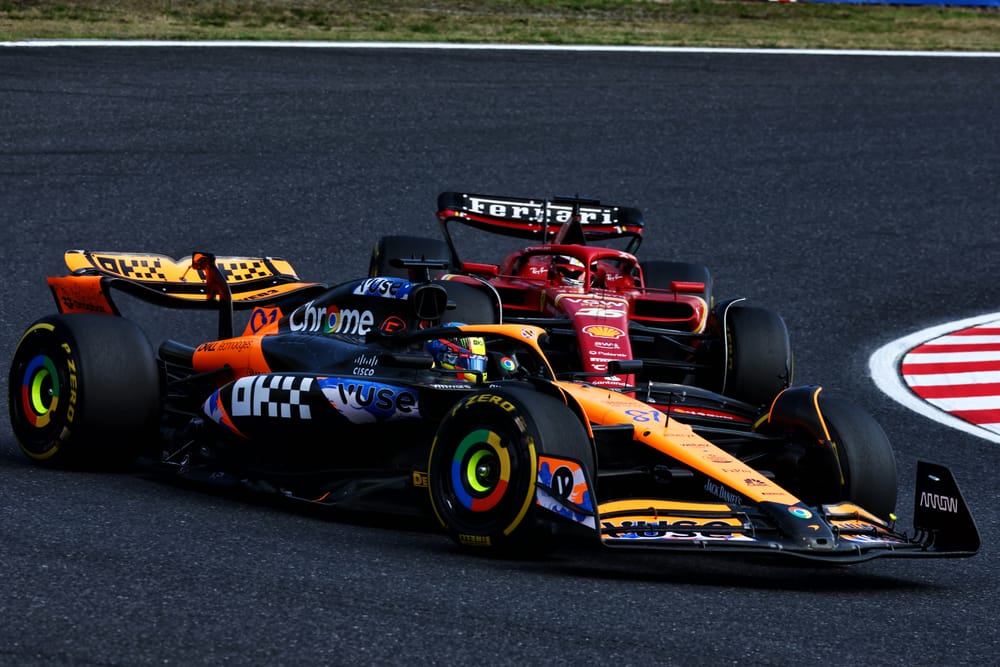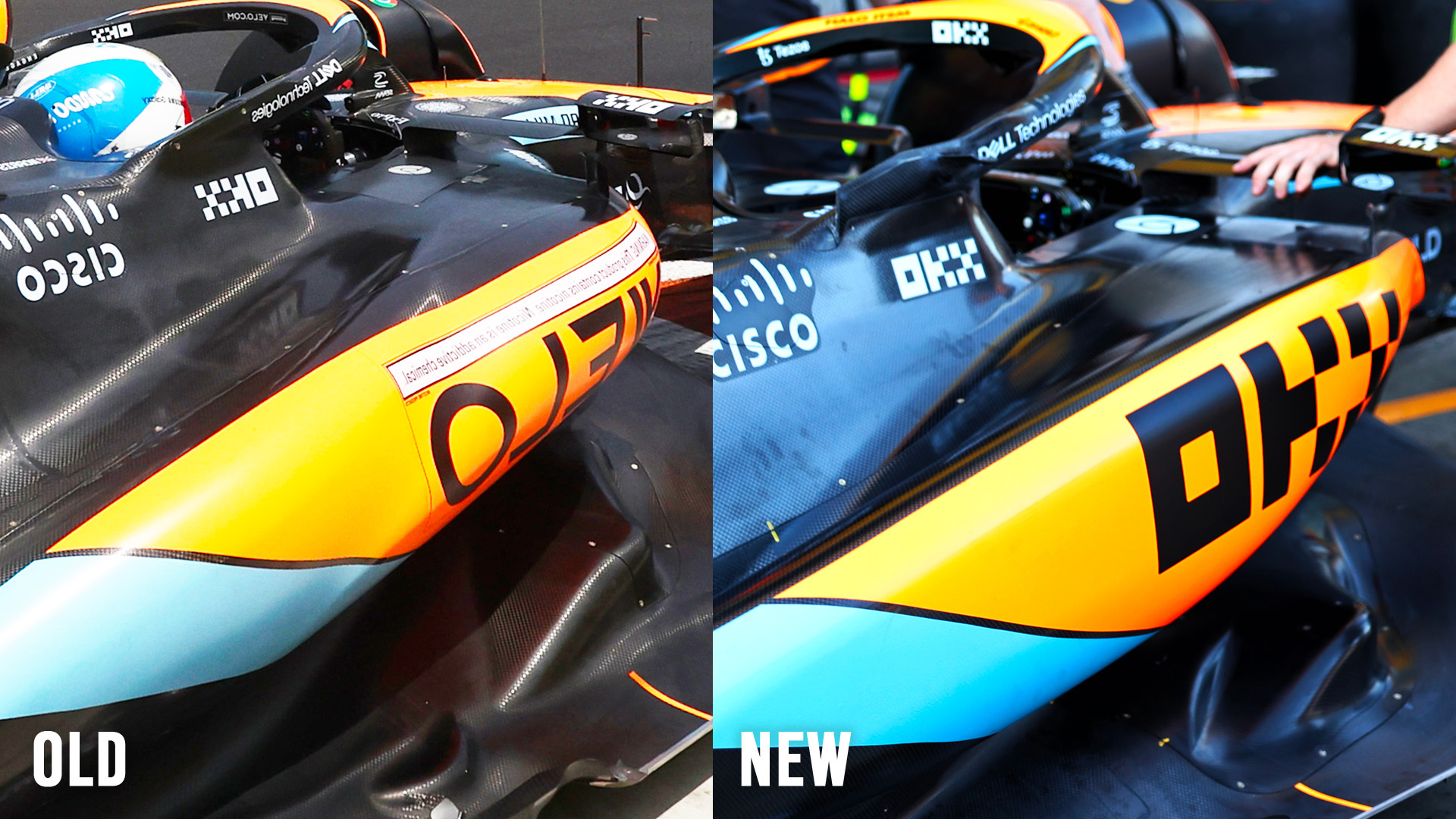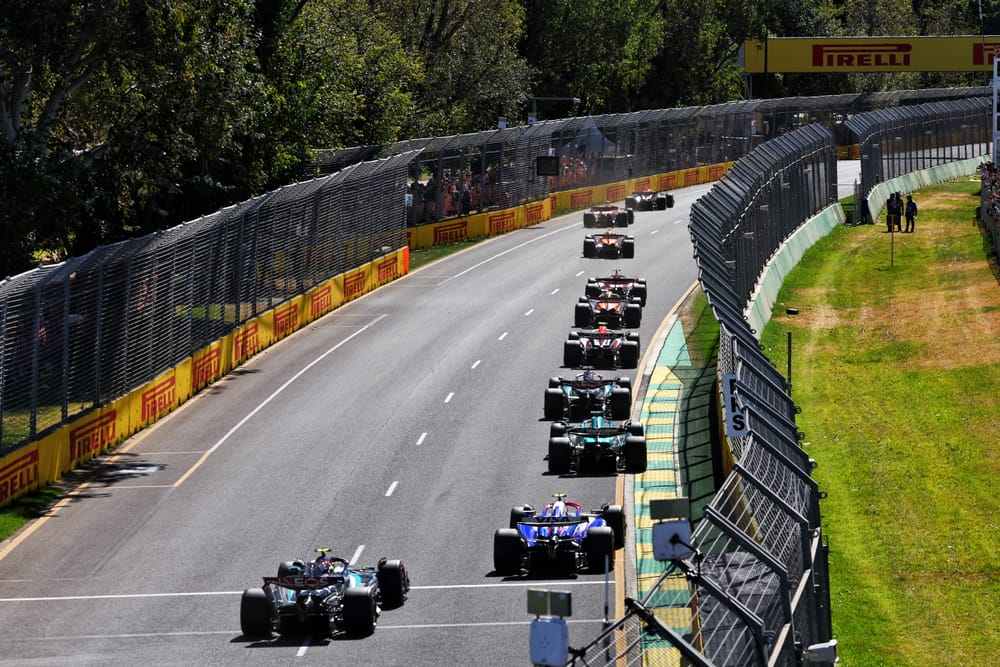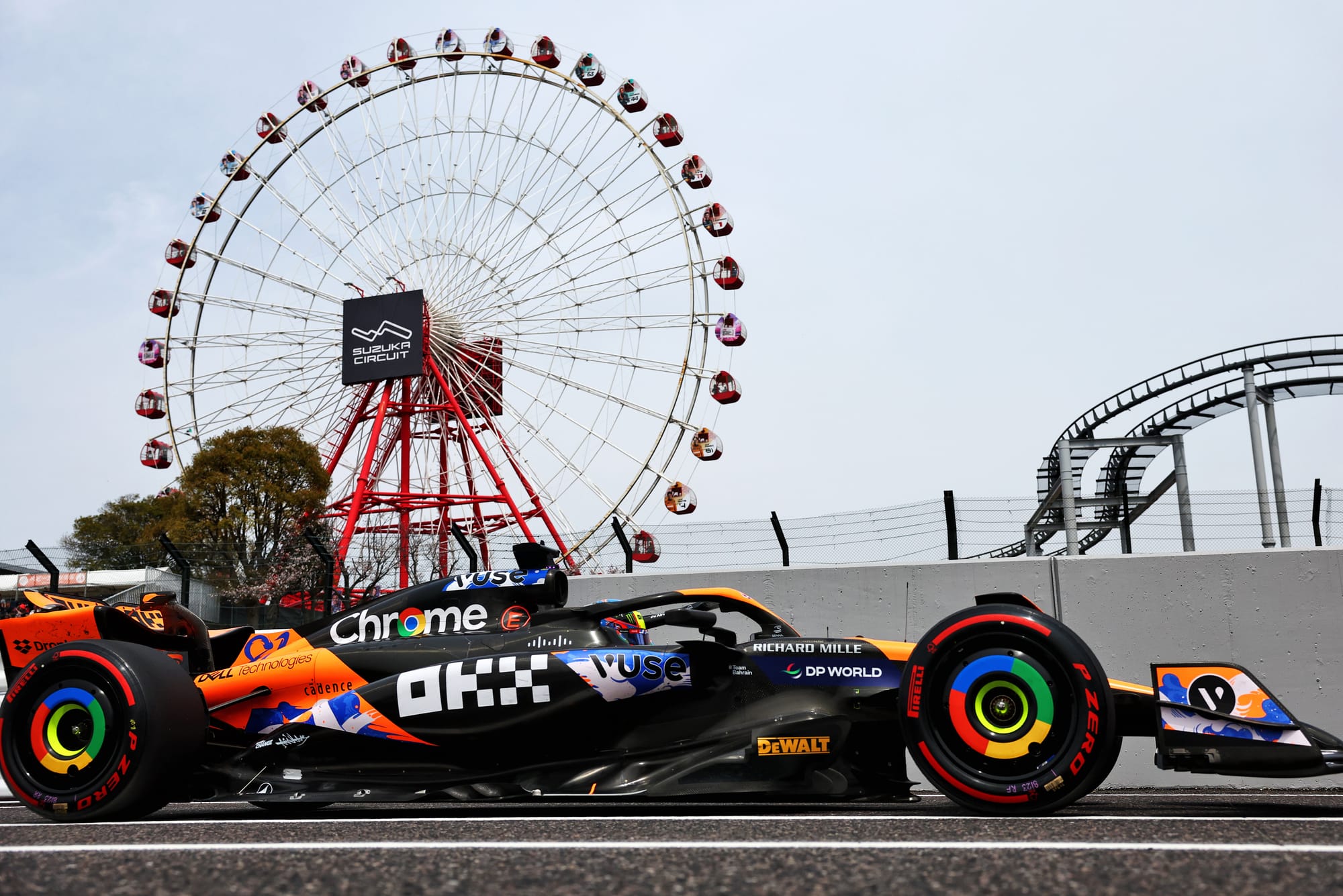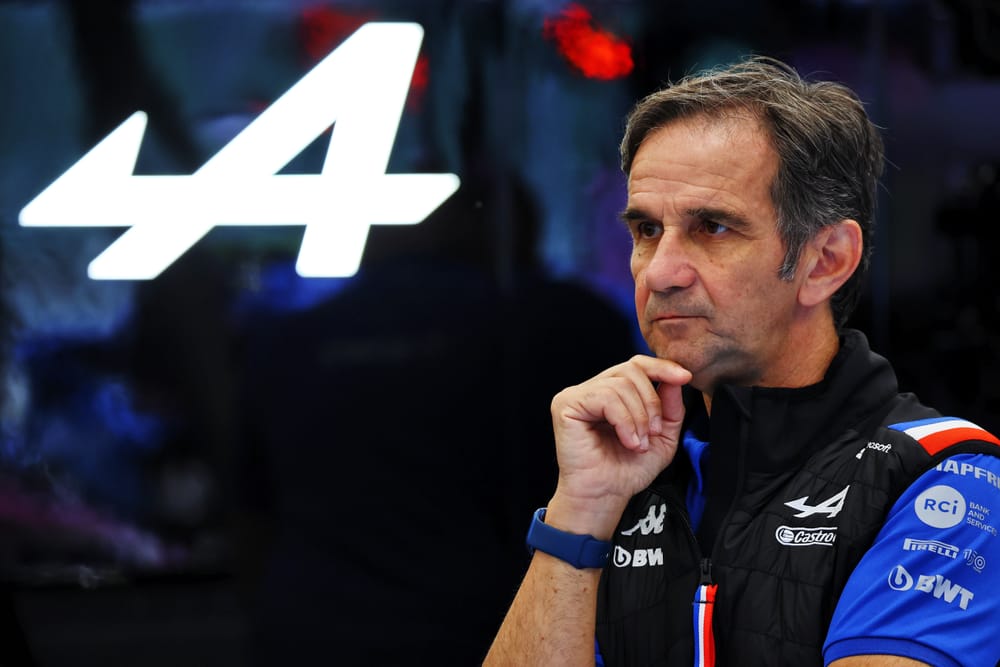Up Next

McLaren’s bid to end a wait of more than a decade to fight for Formula 1 titles again was meant to be turbocharged by high-profile signings joining from big rivals over the winter - but already McLaren is restructuring again thanks to David Sanchez’s unexpected departure.
Sanchez was the first, and the biggest of McLaren’s high-profile new technical signings - which made him a symbol of McLaren’s ambition, stature, and team principal Andrea Stella’s bold new plan to share the technical workload, encourage creativity and provide good, clear communication.
The recruitment drive that convinced Sanchez to depart Maranello for a return to Woking was happening in parallel with an upsurge on track that made McLaren Red Bull’s nearest rival on several circuits in the second half of 2023.
As its technical depth grew over the winter, including Sanchez and Red Bull engineering titan Rob Marshall joining in January of 2024, there was a clear narrative of McLaren being on a great trajectory and ready to unleash its full potential.
After just three months, though, Sanchez is out. One of the key pillars of the original McLaren restructuring from a year ago has gone, having barely had any time to influence things in a positive way.
HOW WE GOT HERE
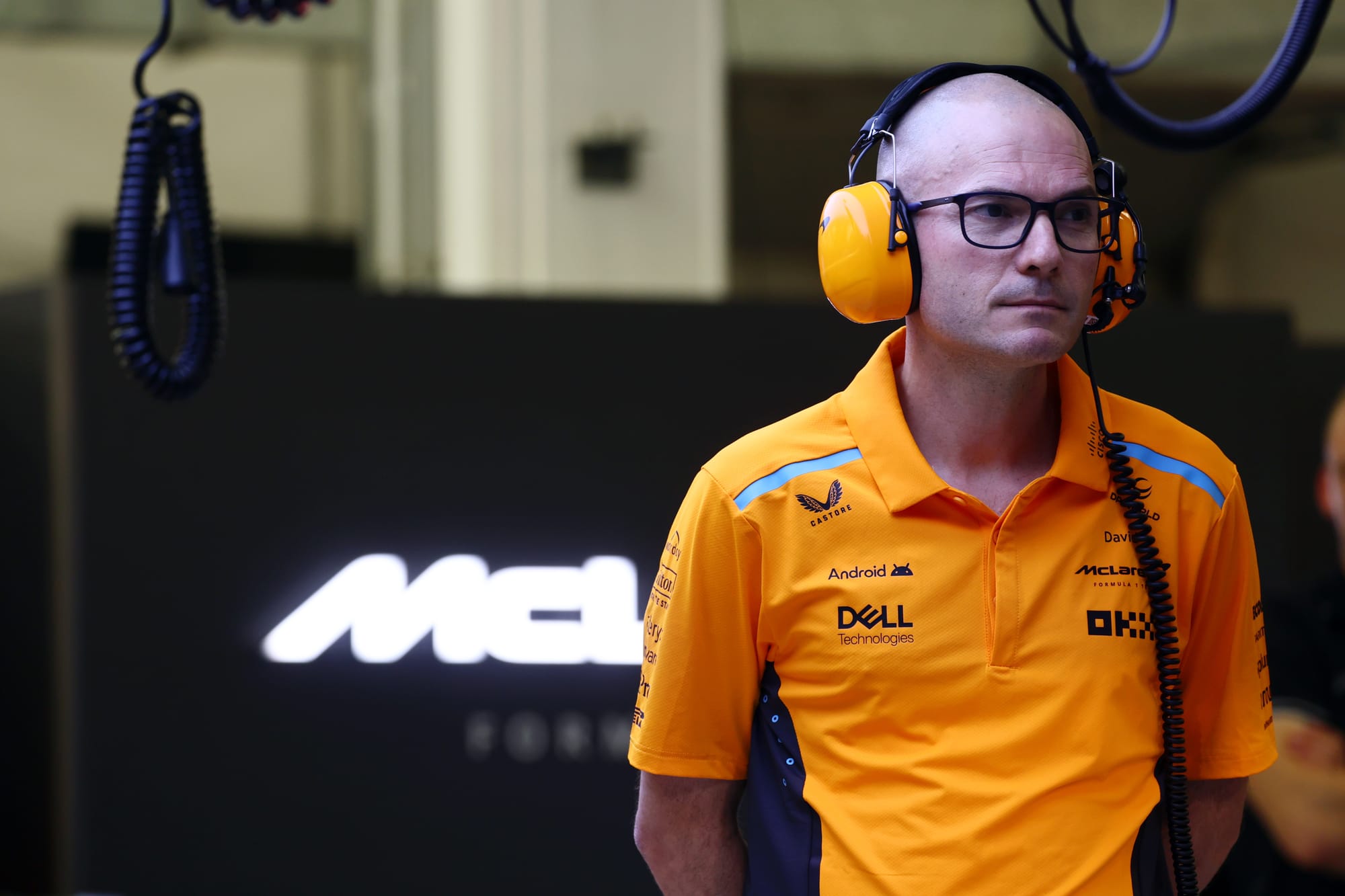
There was no outward sign that this was coming, which made it a genuine shock to the vast majority of the F1 paddock when McLaren announced a “number of organisational updates” ahead of the recent Japanese Grand Prix, within which Sanchez’s sudden departure was confirmed.
McLaren believes the three-pronged technical director structure has worked well since it was initiated immediately after James Key’s exit last spring.
Peter Prodromou became the technical director in charge of aerodynamics. Sanchez, a former McLaren employee, would return from Ferrari in January of 2024 to be technical director of car concept and performance. Neil Houldey was promoted to be technical director for the engineering side.
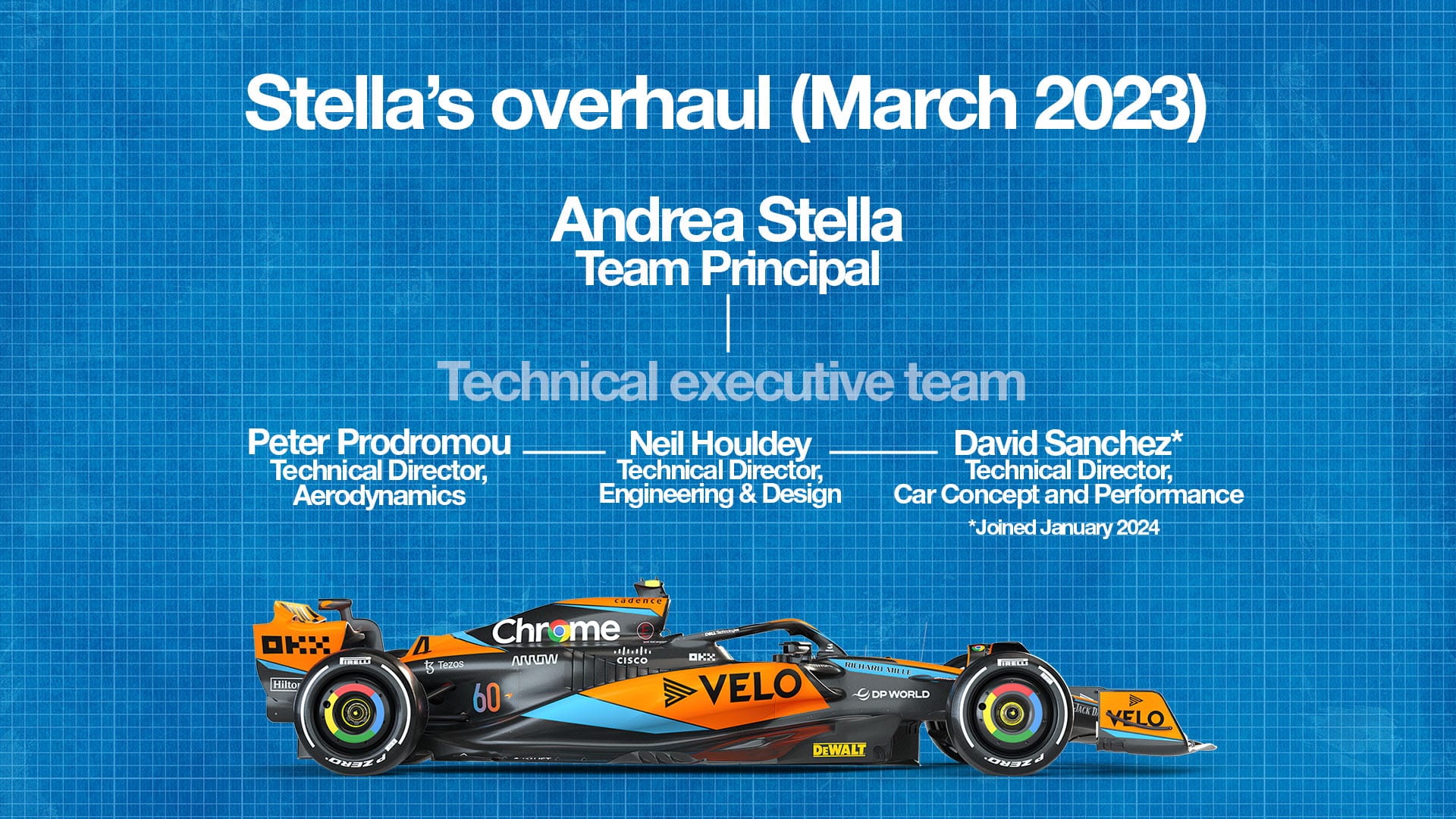
This has been in flux ever since that initial announcement, though.
First, it was obvious that the responsibilities that Sanchez would eventually assume needed to be split between others in the interim.
Then, Houldey lost out on his new position when McLaren got the unexpected chance to sign Marshall - who, like Sanchez, had to wait to join.
Nonetheless, McLaren made good, impressive progress through 2023 with its new way of working, with the season-changing Austrian GP upgrade the first manifestation of that.
And as McLaren was confident it had hired the right people to lead the organisation, it believed January 2024 would herald a smooth assimilation of the new recruits, and let the technical team go from strength to strength.
But that hasn’t quite worked out - although Stella insists this is not because of the technical model itself.
McLaren’s pre-Suzuka announcement made it clear that the structure needed “strengthening and evolving”, with an emphasis on “greater efficiency and effectiveness”.
To that end, Marshall switches to the role of chief designer after just three months, with Houldey promoted to technical director of engineering after all.
Sanchez’s role was “streamlined” to focus on performance rather than concept - and Sanchez won’t stick around to see that through.
He’s left immediately, with a new technical director of performance to be recruited and Stella, who has an extensive F1 engineering background, filling the void for the time being.
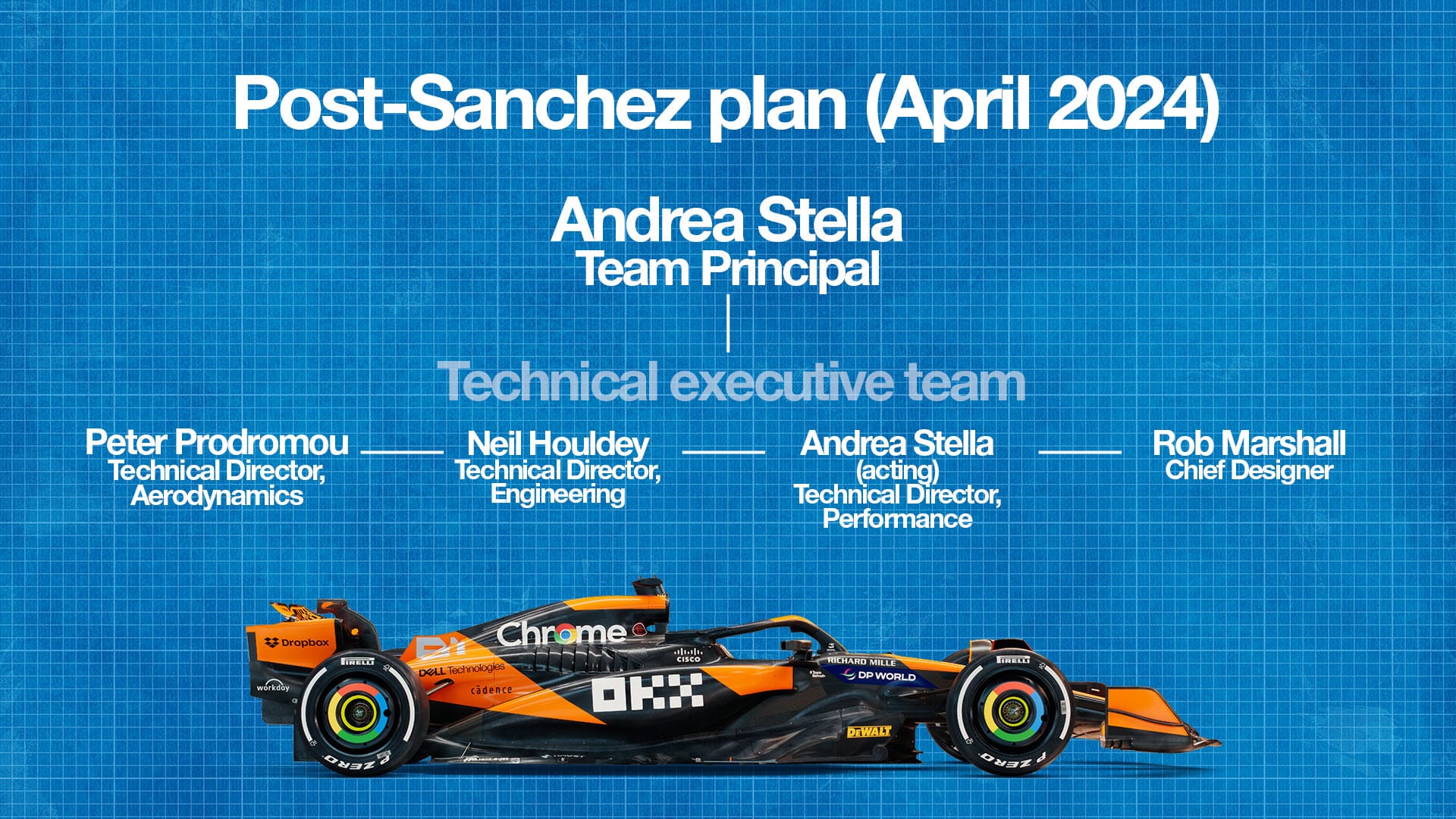
HOW THE SANDS SHIFTED
McLaren was very forthright in its initial announcement. It declared openly that the “role, responsibilities, and ambitions associated with David’s position did not align with our original expectations when he agreed to join us in February 2023”.
The inclusion of that date is significant: it emphasises that Sanchez had agreed to join McLaren two months before it completely changed its technical structure in April.
Sanchez’s Ferrari gardening leave meant a hefty delay before his arrival. With such timelines common in F1, the possibility always exists that the plan will drift from what was originally envisaged.
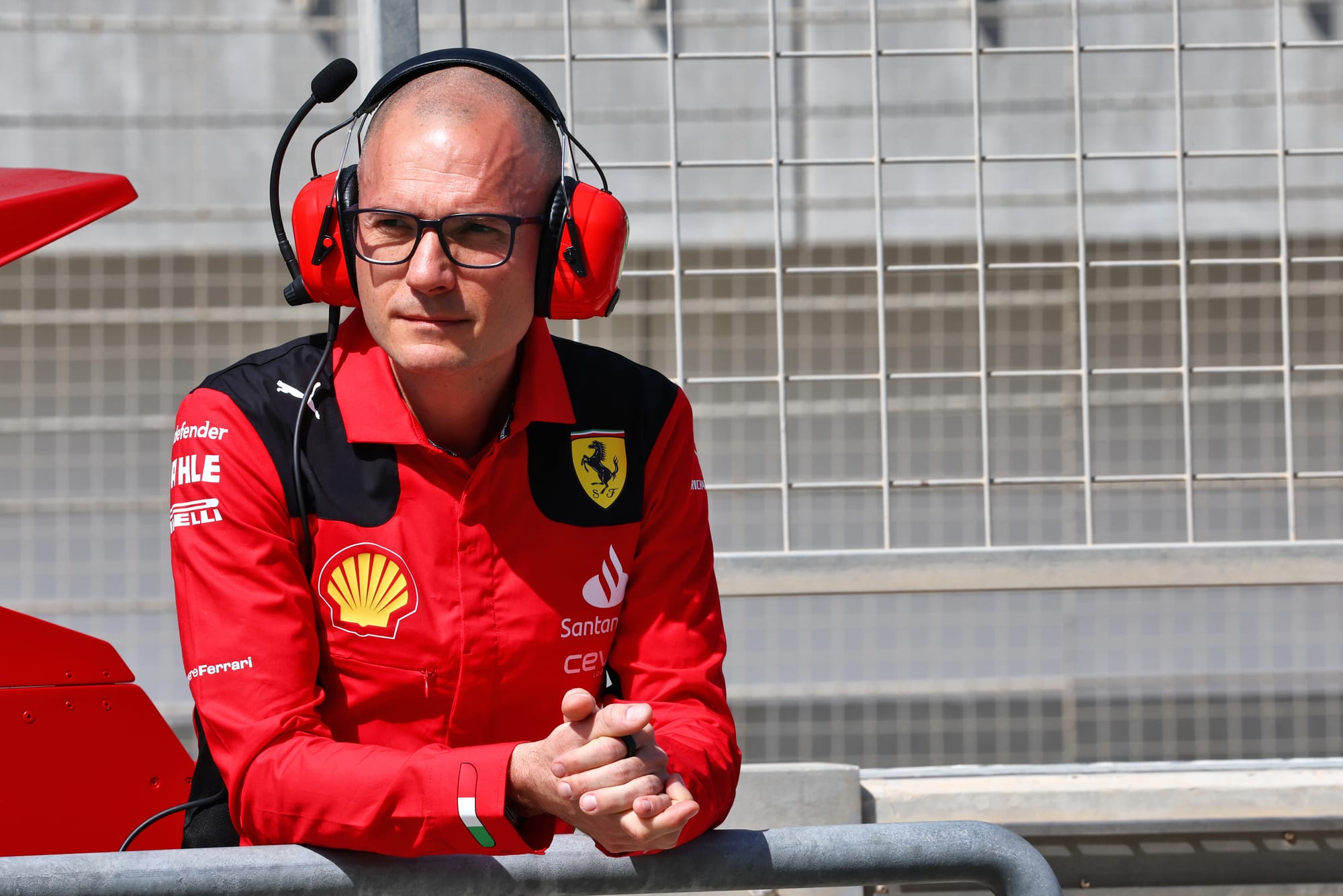
But shortly after Sanchez signed, McLaren enacted a significant strategic change, and over the year that followed the dynamics in the technical department evolved with it.
Sanchez didn’t just join a team that was nine months further into its journey than when he signed.
He joined a different technical department, with a tighter remit than he probably thought he would be getting. In Sanchez’s words, “the role we envisioned and had agreed to was not aligned with the reality of the position I found”.
McLaren hasn’t said this emphatically, but given his seniority at Ferrari and the failure of his assimilation in this new McLaren structure, the implication is Sanchez joined on the understanding he would be a technical director or chief technical officer type.
Stella agrees it was “very different” at McLaren when Sanchez arrived in January 2024 versus in February 2023 when the initial agreement was struck.
The conditions changed and, according to Stella, they changed for Sanchez in particular.
Realising that early in 2024 sparked conversations about whether this was suitable for him after all - and the conclusion on both sides was ‘no, it wasn’t’.
WHY COULDN’T IT WORK?
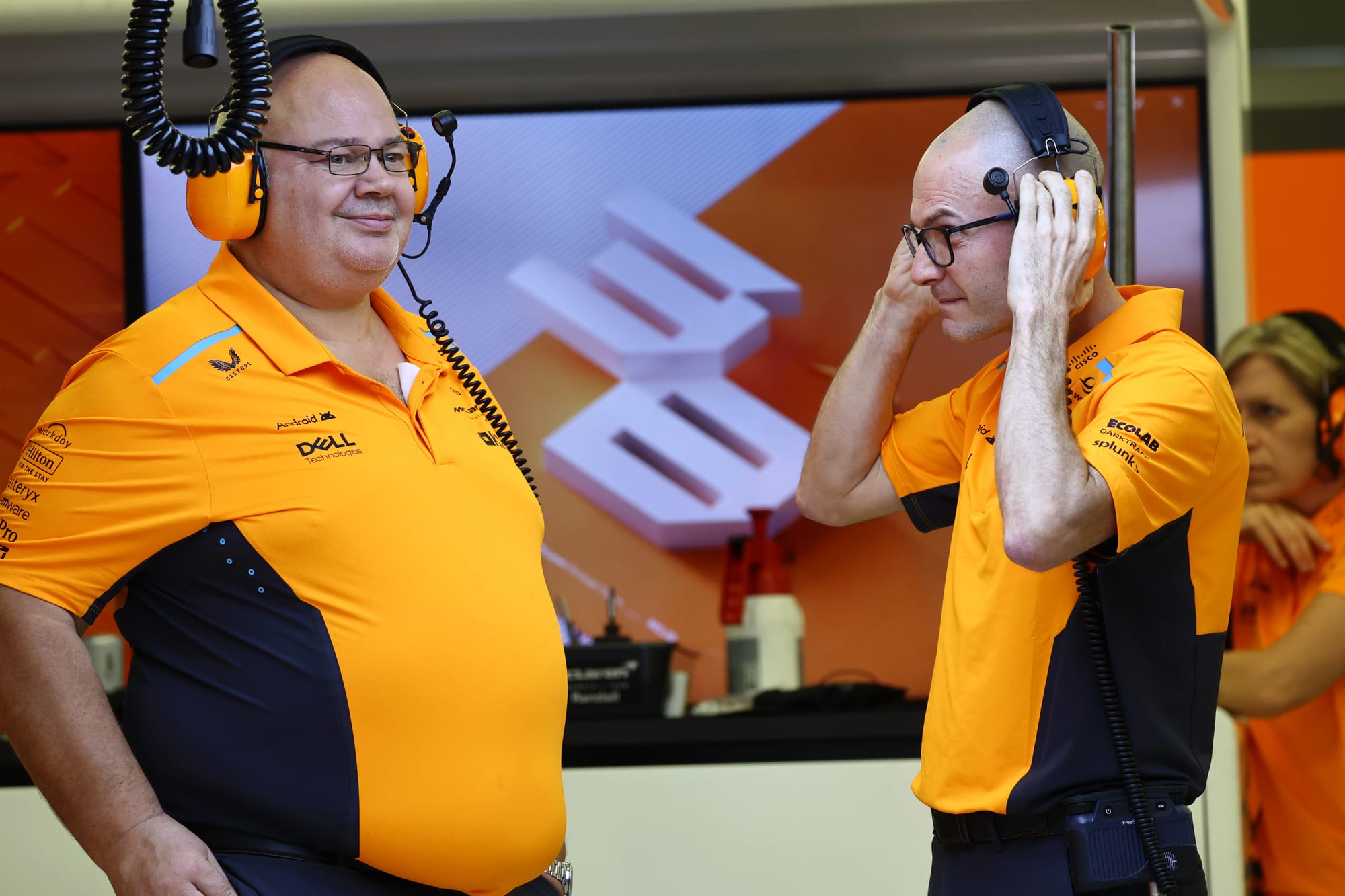
If we’re to believe the three-pronged technical leadership does work, and McLaren hasn’t replicated the problematic matrix structure it swore this was not a repeat of, then something must have been incompatible in terms of how Sanchez specifically fitted in.
As Stella puts it, the set-up needs to play to the strengths of the players. And the polite answer seems to be that Sanchez felt he was too senior for the role McLaren had for him.
The complexity of McLaren's technical leadership, with multiple key figures holding significant roles, could have limited the scope or influence Sanchez expected to wield.
His envisioned role, potentially promised under a different set of circumstances around when Key was still the technical director, might have become diluted or redirected.
That’s all fair. And you can see why it might have left Sanchez feeling unfulfilled. But at the same time, that didn’t guarantee a solution couldn't be found somehow.
This brings us to the slightly less polite answer, which is that Sanchez is too individualistic. He didn’t fit into a structure where he had to accept sharing responsibility and feeding into a wider system.
This was the only reasonable conclusion from reading between the lines and speaking to people in the Suzuka paddock.
Even if the position itself wasn’t what either had in mind…why not adjust? If Sanchez the individual was still a good match for McLaren, then you would think his skills would still be beneficial.
Marshall, for example, is not in the exact job he took on in January 2024 - and he’s not left. But Sanchez seemingly could not accept a reduced role or contribute effectively in another way.
What was so ill-fitting that the best decision was to terminate the arrangement after just three months?
Thinking back 12 months ago, when Ferrari was quite openly admitting it wasn’t that fussed that Sanchez was leaving, the summary from various conversations The Race had was: ‘he’s a great technical mind, but he doesn’t play well with others’.
Maybe that’s what happened here. A combination of Sanchez being disappointed at the change of circumstances, a bit of ego, and a team that has evolved to the point where it doesn’t need to bend over backwards to accommodate him.
Stella, who worked with Sanchez briefly at Ferrari, is trying to not throw Sanchez under the bus. He’s gone out of his way to protect how this reflects on Sanchez, who is still held in high regard for his technical abilities.
Stella praised him for the impact he did have in a short space of time, and hopes Sanchez will be able to “leverage the full scale and breadth of his remarkable skillset” elsewhere - ideally at a team that’s a better fit.
STILL A BLOW TO MCLAREN?
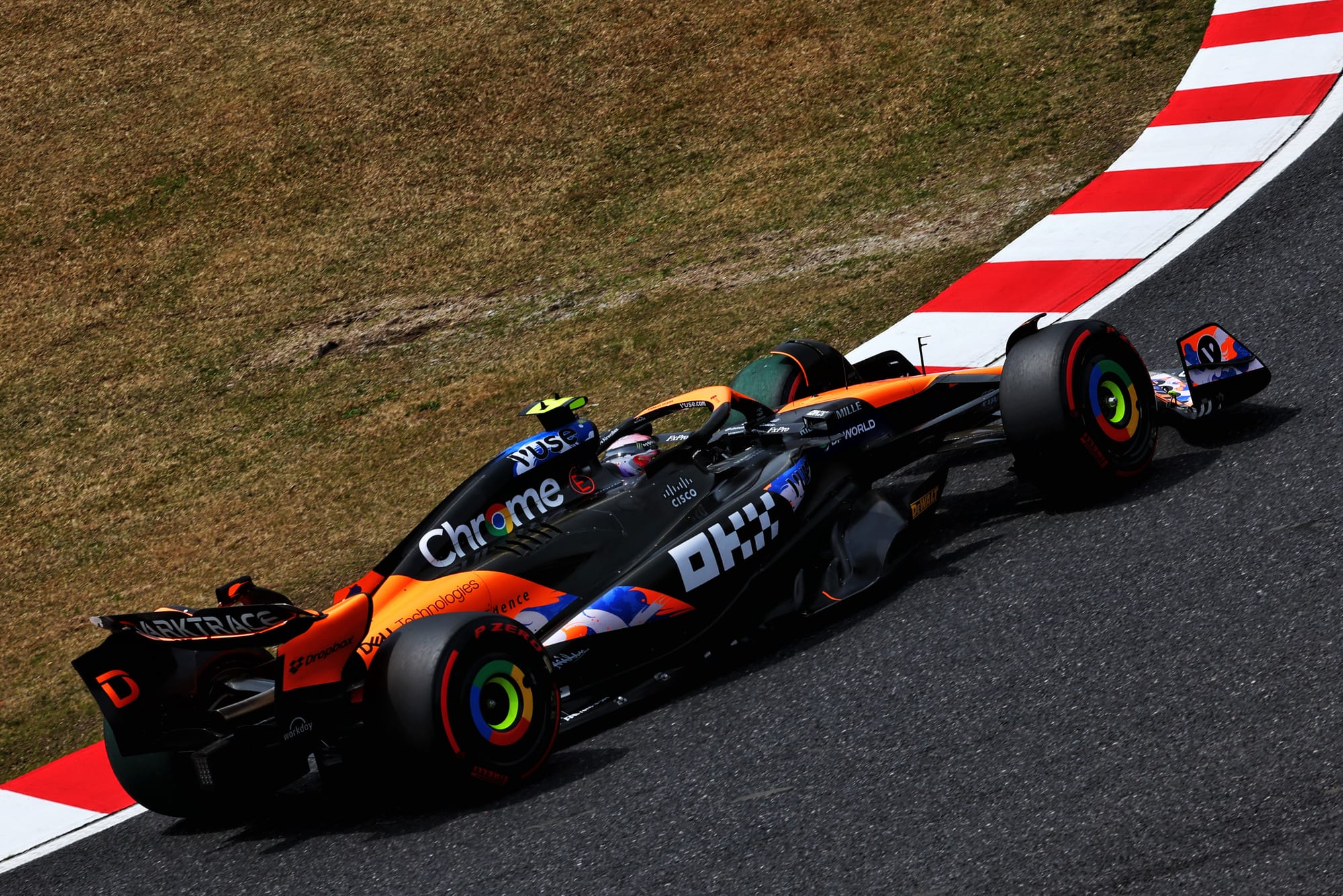
A second technical organisation change in 12 months itself is a bad look, but also isn’t a massive drama for McLaren.
It was a departure from F1 convention to set the team up this way so was always likely to need some refinement to get it to work most efficiently.
But Sanchez's exit is a cautionary tale of how, despite the best intentions, not every high-calibre addition to a team will seamlessly integrate.
In trying to play down how short Sanchez’s second stint at the team has been, Stella argued that three months is a longer time than you think in F1.
He claimed that recruits from the automotive and aeronautical industries reckon F1 moves at a pace three or four times faster than normal businesses - which led Stella to generously claim that Sanchez’s three months is more like a year somewhere else.
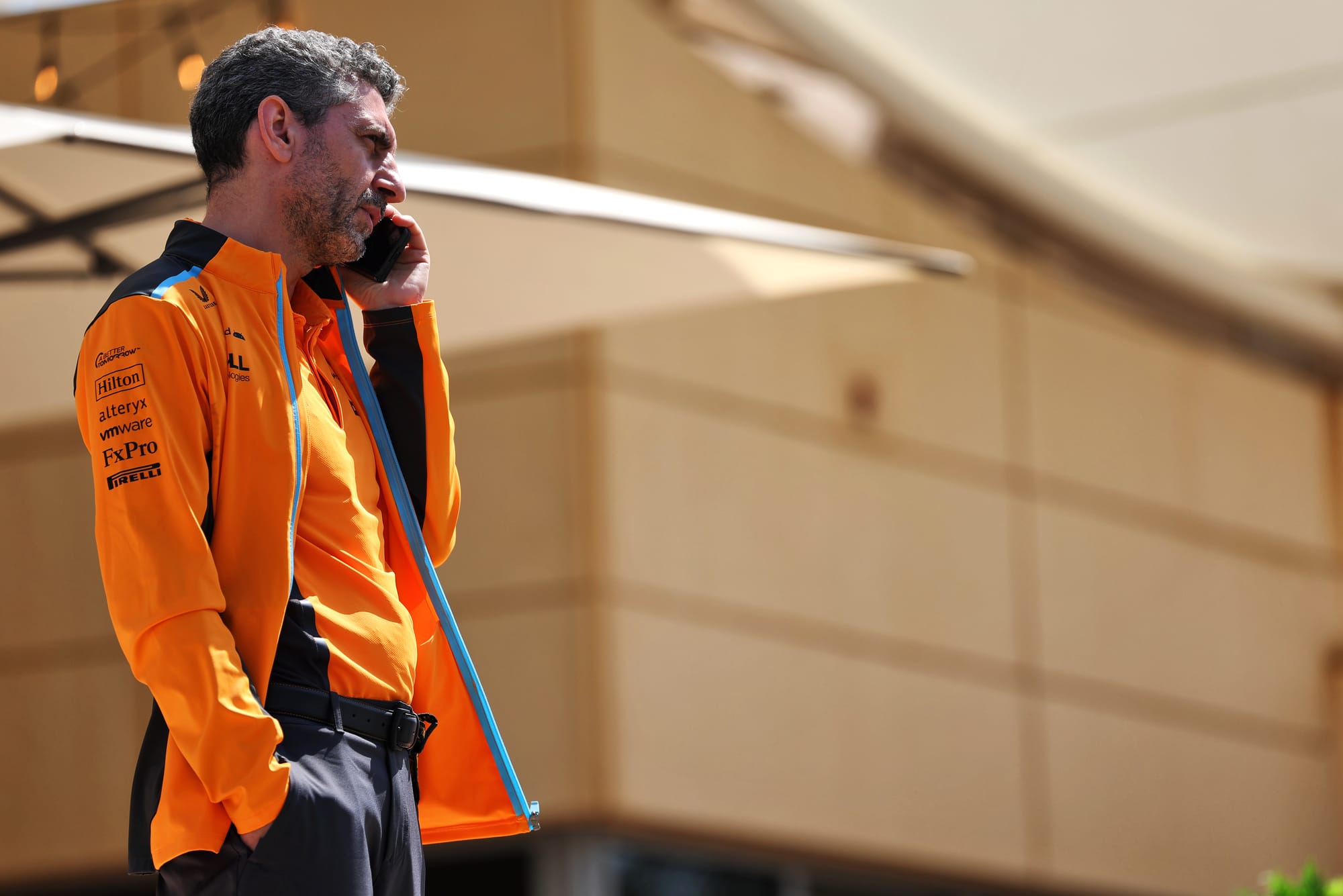
Stella’s probably right to say three months is long enough to decide if things were working. They weren’t. So why delay the inevitable?
McLaren could have given Sanchez until the summer, or restructured to adjust his position and limped along indefinitely, or just ruthlessly sidelined him so others couldn’t gain from what he does have to offer.
But for McLaren, it would mean a compromised structure to accommodate someone who is not contributing properly, doesn’t want to be there, and risks impacting those around him.
This could tangibly impact the 2024 car’s development, work on 2025, and the crucial early work on the foundation for the massive 2026 rule changes.
And for Sanchez, even waiting a few more months could be the difference between swiftly finding somewhere he can have a bigger impact or ending up in limbo.
By the summer, teams will not only have stopped 2024 development, their 2025 cars will be set. Letting Sanchez go now makes good on McLaren’s public claims it wishes him well and genuinely believes he can be an effective asset - just not in this team.
It’s commendable, and mature, but primarily pragmatic. Which has to be the number one priority. It also reflects well on Stella’s leadership. OK, there was a problem in recruitment - but he clocked it, acted swiftly, and made a difficult decision in the best interests of the team.
This move didn’t work as expected but McLaren has at least mitigated the damage. What we don’t know is what the knock-on effects will be.
How well suited will Marshall be to chief designer, a position he did once hold at Red Bull but is out of kilter with the management role he grew into there and was originally meant to fulfil at McLaren?
Has the structure caused other unintended consequences McLaren’s yet to uncover? How long will Stella be pulled into a dual team principal/technical role while a full-time option is sought, and what strain might that create?
Those questions can’t be answered yet, but they will define whether what McLaren is trying to build is successful - or whether there’s a fundamentally flawed foundation beyond Sanchez’s specific issues.


